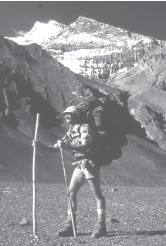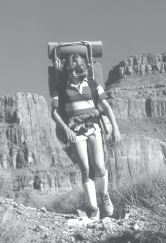| experienced witness, John Healy, the co-founder of the Healy and Wilson trading post at Dyea, who credits men with carrying up to 225 pounds and “whip[ping] the whole business over in two camps, camping the day at Sheep Camp” (Healy 1929:115; Greer 1995:50). Although Berton (1985:244-245) doesn’t cite where he got the information, he mentions that “an Indian packer managed to reach the summit with a three-hundred-and-fifty-pound barrel on his back.” Also that “a Swede named Anderson and a Siwash Indian called Jumbo each made one trip from the Scales to the summit on a bet with a staggering three hundred pounds. They returned in a dead heat.” From The Archaeological Record of Paquimé and Chaco - At Paquimé itself more than two tons of sea shell were excavated. This reflects only the amount of shell stored when Paquimé was abandoned. The specific species of shell found is only what was on hand at the moment, or perhaps just a particular load. Ronna Bradley, Ph.D., reports that much of the Paquimé shell, especially Persicula bandera, originated from Banderas Bay at the juncture of Nayarit and Jalisco, more than 500 direct-line miles. She further observes that triangular pendants made of Melongena patula, similar to those found at Paquimé, were recovered from the site of Amapa in western Mexico, which is also near Banderas Bay. This evidence is the “smoking gun” for an extensive trade system and the transfer of perhaps dozens of tons of shell that had to be carried over great distances to Paquimé. In another example, archaeologists at Chaco Canyon estimate that over 200,000 logs were moved between 40 and 90 miles to build the great houses. Some of the larger logs weighed up to 1,000 pounds and were estimated to be as much as 14 feet in length. Tom Windes further detailed that the average log weighed 300 pounds and was carried at waist level by eight porters using cross members for support. Some of the larger logs may have required as many as 16 porters carrying this load over an eight-to-ten day period. In historical times, there are also many records of Tarahumaras moving huge loads through some of the most rugged terrain on earth. Grant Shepherd, in about 1890, accompanied a piano that was packed in a wooden crate, weighed between 750 and 975 pounds, and was carried by Tarahumaras from Carichic to Batopilas. They covered a distance of 185 miles through some of the most treacherous canyons to be found anywhere. The scientific, historical and archaeological records suggest that Lightfoot underestimates human capacity by approximately 65%. |
 |
Kent Lightfoot’s long distance estimate of 50 lbs and 30 miles is considered to be a casual work load by Canyon Tarahumara. Significantly, the 30 km “political” zone surrounding Paquimé as defined by Michael E. Whalen and Paul E. Minnis corresponds very reasonably to the normal work distances of the modern Canyon Tarahumara. The transhumance Tarahumara have as many as four homes scattered over a 30 mile radius. They use these homes for agricultural purposes throughout the year. |
||||
 |
Experienced Anglo-American and European mountain climbers often transport upwards of 90 lbs. over 30 to 60 miles. This was college student Richard D. Fisher’s foot transport load when approaching a solo climb of Aconcagua Peak, January 1982. |
|||||
 |
Grand Canyon backpacking trips frequently entail loads of 40 to 70 lbs over distances of 30 to 100 miles. High school students and Boy Scouts often carry loads of 50 lbs for 50 miles over a 5 day time period. This example is approximately what Kent Lightfoot is estimating for the maximum range of efficient pre-historic Native American foot transportation. |
|||||
 |
||||||
copyright 2005 - Richard D Fisher - DigitalTeamWorks.com